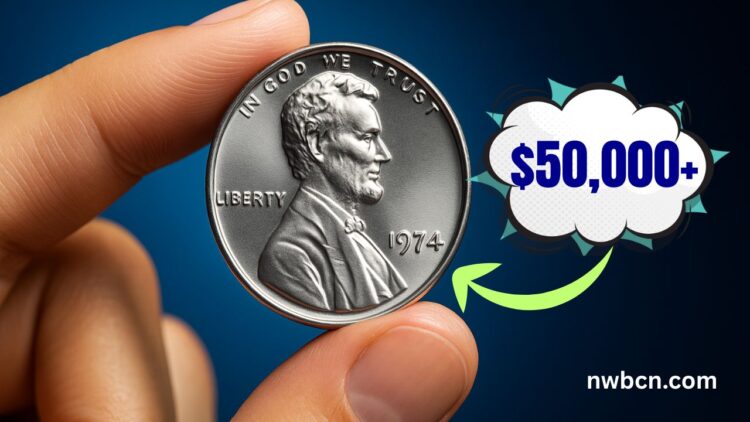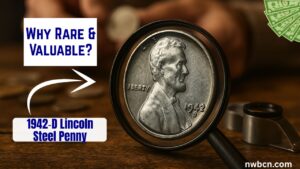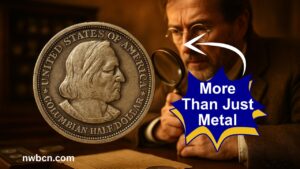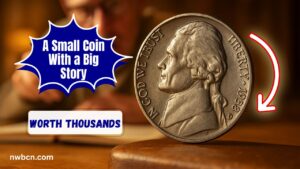In the early 1970s, rising copper prices threatened to make pennies worth more as metal than currency. To cut costs, the U.S. Mint conducted trials of alternative metals, including 96% aluminum alloy.
From late 1973 into early 1974, over 1.57 million aluminum cents dated 1974 were struck—primarily in Philadelphia. However, the plan was abandoned, and all specimens were officially recalled and destroyed before circulation.
Yet, a curious handful—perhaps 12–14 coins—escaped destruction. This created a legal quandary: Are they still U.S. government property or legal collector items? That ambiguity has made the 1974 aluminum penny both a legal puzzle and a collector’s obsession.
Historic Experimentation & Rejection
- Why aluminum? Rising copper costs threatened seigniorage losses—using aluminum promised major savings.
- Trial production: Over 1.57 million pieces were struck in 1973–74. Some were used in demonstration rolls for Congress members .
- Opposition arose: Vending-machine lobbyists warned aluminum pennies would jam machines. Pediatricians noted that swallowed aluminum pennies were hard to detect via X‑ray.
- Mint recall: The project was canceled in 1974; all aluminum cents were recalled and melted, effectively destroying most specimens.
Known Survivors: Rare & Contested
| Specimen | Origin | Status | Notes |
|---|---|---|---|
| Capitol Police Find | Philadelphia | PCGS MS62 certified | Found by Officer Albert P. Toven; donated to Smithsonian |
| Denver Specimen | Denver | PCGS MS63 | Gifted to Mint official, surfaced 2014, later surrendered |
| Aluminum cents in Congress | Philadelphia | ~12–14 unaccounted | Officially unreturned, likely still hidden in collections |
| San Francisco uniface | San Francisco | Known unique error | Struck only on obverse, on Philippine planchet |
Legal Status: Government Claims Authority
Despite being struck at the Denver and Philadelphia Mints, the U.S. Mint maintains that all aluminum pennies remain government property, hence are illegal to own or trade . Several legal battles have supported this:
- In 2014, when Dallas collector Randy Lawrence sought to auction the Denver penny, Mint intervened and filed suit to reclaim it.
- In 2015, a judge ruled that Lawrence might have had legitimate title, but before resolution, he returned the coin and dropped the suit—leaving the legal question open .
To date, no aluminum penny has ever legally entered collector markets.
Numismatic Value: Mythic & Hypothetical
Though illegal to trade, these aluminum cents are assigned hypothetical value by few enthusiasts:
- In 2005, the Toven specimen was valued at $50,000+ by PCGS.
- The Denver penny was appraised up to $2 million before being reclaimed.
- Online estimates and discussions value uniface or mint-mark variants between $200,000–$2 million .
These valuations are academic, as sale is barred by Mint policy.
The Collector’s Dream: Why Enthusiasts Obsess
- Unique composition: First and only aluminum pennies issued by U.S. Mint.
- Extreme rarity: Fewer than 20 survive, and most are government-owned.
- Dramatic backstory: Intriguing mix of policy change, lobbyist pushback, recall, and court drama.
- Alien appearance: Light, silvery and different—unlike any normal cent, often weighing just 0.94g vs 3.11g .
- Insider’s allure: Knowing a famous example is under government control adds to mystique.
1974 Aluminum Penny Facts & Figures
| Attribute | Detail |
|---|---|
| Composition | Aluminum alloy (~96%) |
| Weight | ~0.94 grams (? vs 3.11 grams for copper cent) |
| Mintage (struck) | ~1.57 million (Philadelphia, 1973–74) |
| Official status | All recalled & destroyed |
| Surviving specimens | ~14 distributed; 3 known |
| Legal ownership | Claimed illegal; government property |
| Certified examples | PCGS MS62, MS63 (Toven & Denver cents) |
| Value estimates | $50K–$2M (hypothetical) |
| Court case | 2014–15 Lawrence lawsuit; coin returned |
| Public display | Toven penny displayed at ANA show |
Preservation Tips (For Institutional Custody)
- Store your specimen in a sealed inert capsule to prevent oxidation.
- Retain provenance documentation: Mint records, certification paperwork.
- Keep in a climate-controlled, secure display, especially if used for exhibitions.
- Do not attempt independently trade or sell—ownership is clearly disputed.
The 1974 aluminum penny epitomizes numismatic intrigue—an officially struck but suppressed coin, caught between legal rights and collector fascination.
Its rarity, unique composition, and unresolved owning rights have made it a legendary artifact, as much a case study in policy and law as coinage.
Though barred from trade, its story, imagery, and secrecy continue to fuel collector obsessiveness and academic scrutiny.
FAQs
Q1: Can I legally own a 1974 aluminum penny if I find one?
No. The U.S. Mint officially declared these coins government property and pursued legal action to retrieve them .
Q2: How many aluminum pennies are known to survive?
Approximately 12 to 14 specimens escaped recall; three are documented: the Toven (Smithsonian), Denver (returned), and a San Francisco uniface variant .
Q3: What would an aluminum penny be worth if it could be sold?
Valuations range widely from $50,000 to over $2 million, depending on condition and certification. However, no confirmed sale has ever occurred .




